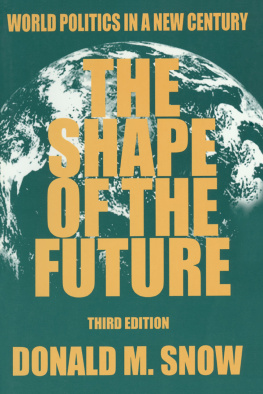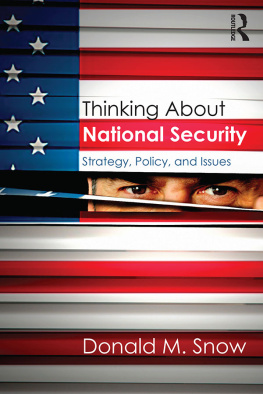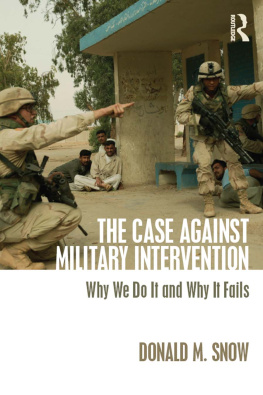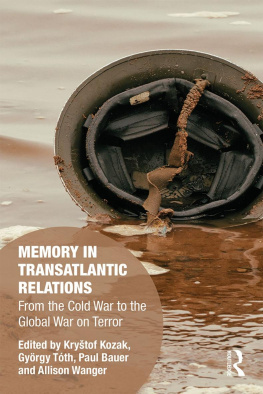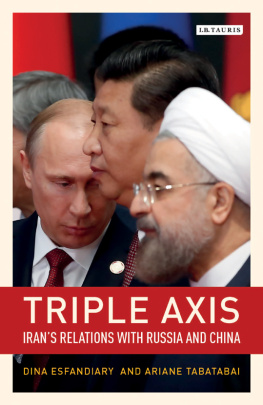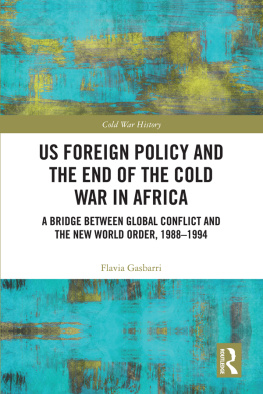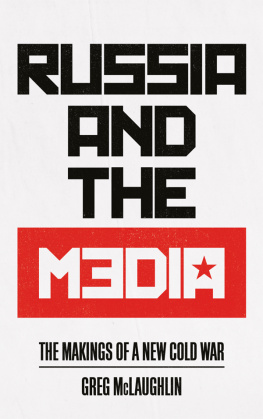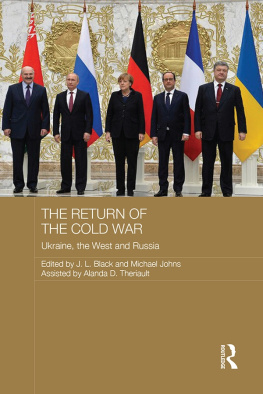THE SHAPE OF THE FUTURE
THIRD EDITION
WORLD POLITICS IN A NEW CENTURY
THE SHAPE OF THE FUTURE
THIRD EDITION
DONALD M. SNOW
First published 1991 by M.E. Sharpe
Published 2015 by Routledge
2 Park Square, Milton Park, Abingdon, Oxon OX14 4RN
711 Third Avenue, New York, NY 10017, USA
Routledge is an imprint of the Taylor & Francis Group, an informa business
Copyright 1991,1995,1999 Taylor & Francis. All rights reserved.
No part of this book may be reprinted or reproduced or utilised in any form or by any electronic, mechanical, or other means, now known or hereafter invented, including photocopying and recording, or in any information storage or retrieval system, without permission in writing from the publishers.
Notices
No responsibility is assumed by the publisher for any injury and/or damage to persons or property as a matter of products liability, negligence or otherwise, or from any use of operation of any methods, products, instructions or ideas contained in the material herein.
Practitioners and researchers must always rely on their own experience and knowledge in evaluating and using any information, methods, compounds, or experiments described herein. In using such information or methods they should be mindful of their own safety and the safety of others, including parties for whom they have a professional responsibility.
Product or corporate names may be trademarks or registered trademarks, and are used only for identification and explanation without intent to infringe.
Library of Congress Cataloging in-Publication Data
Snow, Donald M, 1943
The shape of the future : world politics in a new century / by Donald M. Snow.3rd.
p. cm.
Includes bibliographical references and index.
ISBN 0-7656-0371-3 (c : alk paper).ISBN 0-7656-0372-1 (p : alk. paper)
1. World politics1989 . 2. Cold War. 3. Security, International.
I. title.
D860.S66 1998
327.101dc21
98-21487
CIP
ISBN 13: 9780765603722 (pbk)
ISBN 13: 9780765603715 (hbk)
Contents
An Intellectual Odyssey
The transition from the cold war international system to its contemporary successor is largely complete, and the contours and dynamics are sufficiently in place that the intellectual hand-wringing about chaotic transitions and unruly orders can be set aside. In some ways, the contemporary order resembles the cold war, with the notable exception that there is no longer a Second World of contentious socialist states. That, of course, is a notable change and (at the risk of some xenophobia) an accomplishment for the West.
Beneath that tectonic shift in the distribution of power within the system, the new dynamics have emerged. The United States is clearly the preeminent power in the new order, as it was before; the difference is that there is no clear competitor (what the recent Quadrennial Defense Review by the U.S. Department of Defense called, in military terms, the lack of a military peer competitoran enemy powerful enough to worry about seriously). What American preeminence means operationally is the remaining question. At the level of military power and conflict, problems have moved decidedly to the peripheries of the system, where they always abounded but could be sublimated when the real problem was avoiding a nuclear World War III. The globalizing economy, the other central reality of the new system, clearly has its roots in the 1980s, with a growing momentum for which the phenomenon of ending the cold war was hardly relevant.
It has been nothing short of an odyssey getting from the cold war to where we are now, looking toward the international relations of a new century. Among many other infinitely more important ways and places, this trip and the travails it has engendered have been captured in this book. The first edition, published in 1991, was written during the unruly period between 1989 and the beginning of 1991, when the Communist world was crumbling but before its largest component, the Soviet Union, had joined the disintegration. The second edition was published in 1995 and reflects the effective demise of operational marxism and a general uncertainty of what might reasonably be expected to come next. Written in 19931994, it reflected, among other things, greater trepidation about the fate of Eastern Europe and Russia than events have probably warranted. More optimistic analysis is urgently needed.
The text of the first two editions is encumbered with that history. In looking at the second edition with an eye toward the third, it struck me that too much of what passed for a speculation on the future was now a rumination on what has now become the past. A suggestion about what the international system might look like in the new century required dethatching the text of much of the accumulated material. In essence, this modification entailed tearing the manuscript down, saving the points of continuing relevance, discarding those whose relevance had passed, and looking, ever so tentatively, toward the future. The result is a manuscript that is really a virtually new book altogether. But refocusing is inevitable in the natural history of any multiple-edition work dealing with the changing social and political scene.
The basic thesis of this edition is that patterns likely to continue into the new century are sufficiently positioned to describe and extrapolate the new order with some assurance. In essence, I will identify and describe three dimensions of the ongoing predicament. The first is a political dimension the major (but not sole) reality of which is the political preeminence of the United States, which is almost certain to continue. The second dimension is economic. The central reality is the globalizing economy on which I have commented in the previous editions and about which I will elaborate in this edition. The third dimension focuses on military and other security. The central reality is the likely continuation of the absence of major-power conflict and the continuing nettlesome problem of small, messy (but often quite bloody), internal conflicts in the old Third World.
Because the unraveling of the old system is such an integral part of this odyssey, I will precede the presentation of these dimensions with a chapter describing what happened to create the end of the cold war and what residues from the ending still affect us. My rationale for this description of the shape of the past is dual: the past is indeed the context of the present and future, and a new generation of students who may read this edition are young enough that they scarcely remember what went on.
Following chapters on the political, economic, and security dimensions of contemporary international relations, we will look toward the future: what does American leadership mean for the new century? What directions will a globalizing economy take, and what does that mean for us all? How will the security problem evolve, and what can be done about it? We will conclude with an overall assessment of the likely shape of the future.
THE SHAPE OF THE FUTURE
THIRD EDITION
For nearly forty-five years, the cold war was the most prominent reality in most of the world, but especially in the relations among the major powers of the system. The cold war mind-set became a kind of mantra around which thinking about the relations among states revolved. The realist paradigm was the centerpiece around which revolved a practical, hard-headed analysis of international reality. The realist paradigm saw international relations reduced to the struggle for power ultimately defined in military terms in a competition over the realization of incompatible vital interests. To think of the Soviet (or American) enemy in any but the most sinister, unflattering terms was a sign of intellectual flabbiness. To question the commitment was, in the ironic if overblown rhetoric of Richard Nixons vice president, Spiro T. Agnew, to be a nabob of negativism engaged in pusillanimous pussyfooting with the real problems of the day.

